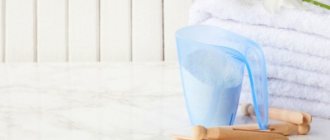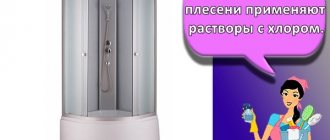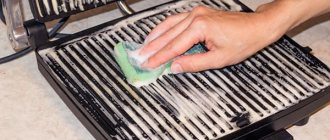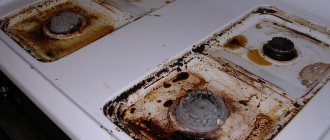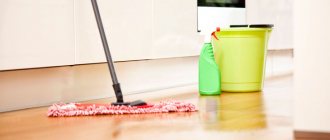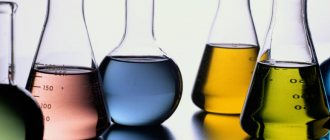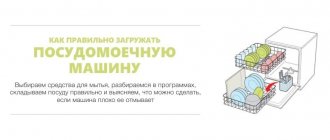Household chemicals are products obtained by the synthesis of chemical compounds. This category of products, which has an extensive market, is intended for the care of property: home, equipment, garden, kitchen utensils, clothing, etc., and is also used for hygiene. This product, depending on its purpose, is classified into types. Each category of household chemicals, in turn, is represented by several types of product. Household chemicals usually include the following main types of products:
- Adhesives and sealing materials.
- Paint and varnish products.
- Detergents and cleaning products.
- Other household chemicals: plant fertilizers, sanitary products for rodent and insect control, etc.
Attention!
The classification of household chemical goods is complex and ambiguous due to the large volumes of products produced and the versatility of some products. Products can also be grouped according to other characteristics: composition, state of aggregation, concentration. There is no universal classification yet that gives a complete picture of household chemical products and their range, serving different research purposes.
Types of household chemicals
This catalog presents the main household chemical products, which are presented in a wide range on the Russian market.
Type No. 1 Adhesive compositions and sealing materials
Adhesives are characterized by the ability to create a film that firmly connects various types of materials: wood, paper, metal, plastic, glass, ceramics, etc. These products are used not only for gluing, but also for the preparation of special adhesive-based paints, the manufacture of abrasives, etc. .P. Bonding occurs due to a chemical reaction between the adhesive and hardener, heating or evaporation of the solvent.
Adhesives are classified according to the following criteria:
- purpose (special and universal);
- by origin of the adhesive (vegetable, animal, synthetic, mineral);
- water and heat resistance;
- consistencies (solid, liquid, powder, paste);
- ready for use (ready or requiring preliminary preparation).
Adhesives of plant origin: based on starch, rubber, resin, protein. Animal - casein, bone, flesh. Mineral composites – bitumen, silicate.
Synthetic compounds are characterized by increased adhesive ability, water and heat resistance: these are adhesives based on thermoplastic, thermosetting resins or rubber (for example, PVA, epoxy, rubber,).
Type No. 2 Paint and varnish products
Paint and varnish products are a type of household chemicals intended for coating surfaces: drying oils, paints, varnishes, enamel, pigments. Applied to surfaces, these household chemicals form a durable film that prevents environmental influences and improves the aesthetic qualities of the painted product.
Drying oils (natural, artificial, semi-natural).
Materials based on vegetable and synthetic oils. Forms an elastic protective film after drying. Used for initial coating of surfaces and preparation of varnishes and paints.
- Natural
(based on vegetable oils). Features: Create an elastic glossy film, dry slowly, used to create external/internal coating. Service life – 3-4 years. - Artificial
(based on petroleum products). They are dark in color, dry slowly, and are used only for temporary protection. - Semi-natural
(vegetable oils together with synthetic resins and solvents). They come in different consistencies, colors from brown to dark, and create a quick-drying, durable film. Used for the production and dilution of paints.
Paints
These are pigments mixed with a film-forming substance that forms a durable, opaque coating when applied. Depending on the raw material there may be:
- Oil
- suspensions based on drying oil, thickly grated (requiring dilution) and liquid grated. - Enamel
- solutions of pigment in varnish. There are alkyd (wide range of applications, create a shiny film), nitrocellulose (quick-drying, with a mirror-glossy surface coating, flammable), silicone (durable matte protective coating, validity period - up to 10 years). - Water-soluble
(water-based). Properties: quick-drying, with a matte, easy-to-clean film, used for interior work). - Adhesive
. Features: paste/powder mixtures, non-toxic, not resistant to moisture, used for interior work.
Lucky
Substances based on organic solvents that form a durable, glossy, transparent (except for bitumen) protective film after drying. Properties depend on the raw materials used for production.
- Oily
. Used to cover wooden surfaces, used for interior work, medium gloss. - Resin
. They create a durable, shiny, weather-resistant coating for use indoors and outdoors. - Nitrocellulose
. Fast-drying, durable coatings with a pronounced shine, for metal and wooden surfaces. - Asphalt bitumen
. Compositions that create a durable mirror-like black film that is resistant to moisture, corrosion, and electricity. They are highly flammable. Used for metal coating.
In addition to the main paint and varnish products, this category also includes auxiliary products - solvents, primers, putties, driers, etc.
Type No. 3 Detergents and cleaning products
Designed for manual, mechanical, automatic washing, cleaning various types of surfaces from dirt, personal hygiene. The category is represented by soaps, synthetic detergents and auxiliary products.
Soap
According to their intended purpose, they are used for washing, hand hygiene, washing dishes and household products: they are divided into two large groups - household and toilet. Depending on the consistency, soaps are divided into solid, liquid, paste, and powder.
Solid soaps
They contain sodium salts of fatty acids and split vegetable oils - hemp, sunflower, flaxseed and others. There are regular and sawed (specially processed), the pieces have different weights - from 150 to 500 g and shapes - rectangular and curly. Sold without packaging or in it. Requirements for the appearance, smell and consistency of this product are regulated by GOST 30266-95.
Liquid and paste soaps
are made from potassium salts of fatty acids and a mixture of vegetable oils. This type of product is used for economic purposes, technical needs, medicine, and veterinary medicine.
Main types of soap according to intended use:
- Economic
. Available in regular and clarified. The percentage of fatty acids - 65, 70, 72, 76 - is an indicator of the quality of the product: the higher the percentage, the better the product. - Toilet
(solid, liquid, powder). - Children's hygiene
- without the use of fragrances and dyes, 1% lanolin and boric acid are added to protect delicate skin. - Antibacterial
- the active substances included in the composition destroy up to 90% of bacteria. - Exfoliating
– containing scrub particles, smoothes and refreshes the skin. - Medicinal and cosmetic
– depending on the purpose, it contains phenol, birch tar, cinchona, etc. - Glycerin
- with the addition of 2% glycerin, softening and moisturizing. - intimate
.
There are special-purpose soaps used in various types of industry - textile, leather, metallurgical.
SMS (synthetic detergents)
Products made on the basis of surfactants (surfactants) that activate the interaction of water with dirt particles that move from the surface of the fabric into the soap solution. The foaming property of the active substances pushes dirt to the surface of the water.
Synthetic detergents are classified:
- by purpose:
universal (with a pH level of 9-9.5); for washing cotton and linen fabrics (pH 10-11.5); for wool and silk (pH 7-8.5); a special group - SMS for washing machines, marked with the “Automatic” icon, characterized by reduced foam formation; - by consistency:
granular, liquid, creamy; - by type of use:
for hand washing, conventional washing machines, automatic machines; complex action (with bluing, whitening effect); - by method of application:
main and auxiliary (rinse aids, starching agents, bleaches, antistatic agents, etc.)
Unlike any type of soap, SMCs have better cleaning power, since surfactants, although not the main components of the mixture, play a major role in the quality of washing.
Cleaners
Mixtures used to clean various surfaces are characterized by the raw materials used for their manufacture.
- Abrasive.
They contain abrasives of natural (pumice, chalk, sand) and artificial origin. They clean the surface well, but have an aggressive effect on it: with frequent use, the protective layer is damaged. - Non-abrasive.
They are created on the basis of surfactants, therefore they have a mild cleansing effect, but are less effective.
In addition to these components, cleaning products may include soda, ammonia, which increase the cleansing effect, and glycerin, which protects the skin of the hands from the aggressive effects of chemicals.
According to their intended purpose, cleaning products are classified into groups:
- for washing and cleaning dishes
- do not contain toxic components and are easily washed off; - for cleaning household appliances
(stoves, ovens, hoods, refrigerators, etc.) - contains crushed abrasives and surfactants; - for disinfection
– with disinfectant additives; - for the care of furniture upholstery, carpets, and pile products
- they create foam that removes dirt particles; - for cleaning mirrors and glass
- include ammonia; - for the care of metal surfaces
- together with finely ground abrasives they contain ammonia; - polishing compounds:
floor mastics, self-shining compounds (not requiring rubbing of floors), furniture polishes; are made on the basis of wax, paraffin, synthetic resins or oils; - stain removers
- the product dissolves the stain, and the adsorbent contained in the composition absorbs dirt.
Products intended for the care of cars, motorcycles, and other types of transport are included in a separate group. In addition to the cleaning effect, these types of household chemicals can be used to remove rust, protect against corrosion, care for individual car parts, for bodywork and other preparatory work before painting.
Cleaning products at the best prices
Best prices for bulk purchases
View in the catalog
Type No. 4 Other household chemicals
Products belonging to a separate category are intended for caring for plants, animals, as well as for combating various pests - insects and rodents.
For caring for plants and animals
- Fertilizers and other means to stimulate plant growth and increase productivity. Depending on the components, fertilizers can be mineral (based on nitrogen, potassium, phosphorus), organic (peat), bacterial (azotobacterin). Microfertilizers are represented by individual chemical elements necessary for plants (copper, zinc, boron).
- Weed control products (herbicides).
- Plant and animal protection products.
Pest control products
- Means for controlling insects
(insecticides) – crawling, flying; to destroy or repel moths; for the control of pet parasites, tree pests, as well as complex action products. - Rodent exterminators
.
When purchasing household chemicals, you should check the certificate of compliance with standards; pay attention to color, consistency and other parameters important for using the product in everyday life.
What is the difference between home cleaning compositions and professional cleaning detergents?
Universality vs narrow specialization If in the home arsenal the norm is, for example, one product for all kitchen surfaces + dishwashing detergent, then in a professional kitchen you will find a whole arsenal of products - separate for each type of surface and several more products for the dishwasher. And that’s why maids carry heavy carts along hotel corridors - they contain professional cleaning products for all surfaces in the rooms.
Main manufacturers
The household chemicals market is developing very rapidly. The high population demand for these products regulates the growth in the quantity and range of household chemicals. And, although new manufacturing companies are emerging, the names of some foreign and domestic brands have gained stable popularity in the household chemicals market, and their products are in high demand.
Foreign companies
Paints and varnishes – AkzoNobel (Holland); Henkel, BASF, Caparol, Alpina (Germany); PPG, DuPont (USA); Nippon (Japan); Tikkurila (Finland); Sniezka (Poland).
Please help make this article better. Answer just 3 questions.
Washing and cleaning products, cosmetics:
- Henkel
(Germany): brands Fa, Persil, Pril, Bref, Vernel, Pemolux; - Procter and Gamble
(USA): Pampers, Tide, Ariel, Lenor, Pantene, Always, Oral-B, Head&Shoulders, Wella, Gillette lines; - Colgate-Palmolive Company
(USA): Colgate oral care products, shampoos, Palmolive soap; Lady Speed Stick, Mennen Speed Stick; - Kimberly-clark
(USA): Kleenex, Huggies, Kotex, Depend; - SCA
(Sweden): Libresse, Libero; - Reckitt Benckiser
(UK): AirWick, Calgon, Cillit Bang, Dosia; - Unilever
(UK): Lux, OMO, Rexona, Timotei, Sunsilk, Dove, Ax, Domestos.
Russian brands
Well-known domestic manufacturers of household chemicals:
- group
(household and professional chemicals): Aquagel, Clover, Olinka; - OJSC VKhZ "Kristall"
(washing powders, pastes, liquid detergents); - JSC "Aist"
(SMS and cleaning products); - OJSC "Nevskaya Cosmetics"
(skin and hair care, toilet soap, children's cosmetics): "New Pearl", "Eared Nanny", "Sun"; - Concern "Kalina"
: "Black Pearl", "Clean Line", "Velvet Hands", "One Hundred Beauty Recipes", "Forest Balm", MIA.
Storage and disposal rules
Most household chemicals, if stored improperly, can have a toxic effect on the body, causing allergies and poisoning. Therefore, when purchasing this product, especially in large quantities, you need to follow some rules.
- Check the integrity of the packaging: if damaged, the product should be removed from circulation.
- Household chemicals are stored separately from food products, in a place remote from permanent human habitation.
- The store must be equipped with a special storage room - ventilated or with a ventilation system.
- The material covering the walls and ceiling should be easy to wash and not absorb moisture and chemical compounds from the air.
- Retail premises and warehouses must be equipped with storage racks lined with non-flammable, non-toxic, easy-to-clean plastic.
- The distance between the walls of the room for storing household chemicals is at least 1 m.
- Warehouses must be equipped with a fire extinguishing system.
- Storage temperature for household chemicals is from 0⁰ to 15⁰C, humidity is not higher than 70%.
- Pesticides (herbicides, insecticides, fertilizers) are stored in a separate room.
Rejected household chemicals that have exceeded their expiration date must be destroyed. The disposal method depends on the chemical composition of the product and is carried out by special organizations using environmentally friendly technologies. First, hazardous substances are neutralized by mixing with reagents, then the waste is crushed and processed into recyclable materials - fertilizers, fuel, components for cement production.
Attention!
It is strictly prohibited to dispose of household chemicals on your own, without the authority to do so. You should contact organizations that have permission and equipment appropriate for the task.
Folk remedies for cleaning. How to make your own product
The products sold in stores are good for everyone, but you can do without them. Homemade tricks are in no way inferior in efficiency and reliability. And they are much cheaper than store bought ones. What products did our mothers and grandmothers use in the era of shortages of household chemicals? The list looks short and simple.
- Soap solution. Grate 120 grams of soap and dissolve in warm water (8 glasses). The recipe is suitable for washing kitchen surfaces, dishes, plumbing fixtures, floors, glass and mirror surfaces. To ensure that there are no streaks left on the washed surfaces, it is advisable to rinse them with water several times, or wipe them with paper if they are glass or mirror surfaces.
- Soda-salt solution. Mix 2 teaspoons of salt with 1 glass of soda and add hot water to make a thick paste. This solution can be used to remove carbon deposits from the oven, wash bathroom tiles and plumbing fixtures.
- Vinegar solution. Vinegar is great for cleaning floors. Add 1.5 cups of vinegar to 2 liters of water and you will have an effective product that will disinfect the floor and add shine to the surface.
Often, buyers prefer universal folk cleaning products that can cope with various types of dirt on various surfaces.
Composition of household chemicals
Various chemical and natural compounds are used to make household chemicals.
- Surfactants
are used in SMS to improve the quality of washing. - Vegetable oils, fats
. Used for the production of hair cosmetics and soap. Obtained from the seeds of plant fruits or by extraction. - Emulsifiers
promote the formation of an emulsion from substances that usually do not mix with each other. These ingredients increase the concentration of the product and the quality of the resulting product. - Fragrances
. Flavorings to give the finished product a pleasant smell. May be natural or derived from artificial substances. - Glycols
. Used to impart a moisturizing effect, mainly in gels and lotions. - Carbopols
are thickeners and stabilizers. - Substances that create a film
. They are included in cosmetic products to facilitate their application to the skin.
Particular attention should be paid to the safe storage of household chemicals containing substances that can cause allergic reactions - chlorine, surfactants, phosphates, phenols.
“Apply, wash off after 30 minutes” vs. “Time is precious”
In your business, you pay your staff for every minute they work. And the cleaners too. Therefore, the faster the product acts, the more time the cleaner saves, and you save money. Here, professional detergents also cannot stand any comparison with homemade ones, for which the action for 30 minutes is completely normal.
Label information vs. training and safety precautions Due to the low concentration of active substances, most household products are practically safe, which cannot be said about detergents for professional cleaning. High concentrations of active substances, acids, and alkalis make them potentially hazardous to health. Therefore, in order to use them as efficiently as possible and at the same time without danger to themselves and others, employees who will work with these compounds must undergo training.
How else do professional chemicals differ from household cleaning products? As a rule, it is supplied in 5-20 liter packaging in containers with which dispensers are intended to be used. Professional detergents also differ from home ones in price - in terms of per liter, the price of professional detergents is 2-3, or even 4 times higher than household detergents. This is explained by its complex composition, but is compensated by its highly active components - the consumption of such a product is several times lower than products for home use.
Professional chemistry works most effectively in tandem with professional consumables, equipment and trained personnel.
Quality requirements
General technical requirements for household chemical goods are established by GOST 32478-2013, which has been in force since the beginning of 2016. Prior to this, the standards were regulated by GOST R 51696-2000. Quality standards regulate a number of indicators that these types of products must meet, for example, chemical composition, color, consistency. Here are the state standards that manufacturers of household chemicals must follow:
- GOST 25644-96 – requirements for synthetic powder detergents;
- GOST 28546-2002 – to the technical characteristics of toilet soap;
- GOST 30266-95 – for laundry soap;
- GOST 32481-2013 – for household chemicals in aerosols;
- GOST R 52488-2005 – requirements for all laundry detergents;
- GOST 31676-2012 – standards for perfumery and cosmetic products, etc.
In addition, there are other types of state standards and technical conditions that regulate not only technical requirements, but also requirements for labeling and the appearance of these products. There are also certain standards for storage and disposal conditions.
Please help make this article better. Answer just 3 questions.
Main features
Approximately half of the market is occupied by laundry detergents.
These are powders, gels, conditioners, and other liquid and bulk formulations. The next step includes detergents for dishes and household appliances. Then there are bleaching compounds, and then windshield washers. It is important to adhere to the storage rules prescribed by manufacturers, otherwise you can seriously harm your health. You must first read the instructions and strictly follow them. All household chemicals should be kept away from food.
